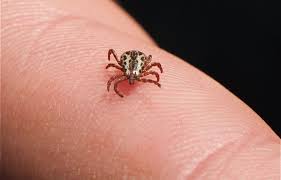Tiques: Everything You Need to Know About Symptoms, Prevention, and Treatment
“tiques”
Tiques: Everything You Need to Know About Symptoms, Prevention, and Treatment
When most people hear the word tiques, they often confuse it with something simple like a skin irritation or rash. But in reality, tiques are involuntary, sudden movements or sounds made by the body, often linked to neurological or psychological conditions. Understanding tique disorders is essential because they affect millions worldwide, yet they are still misunderstood and stigmatized.
In this article, we’ll dive deep into what tiques are, their causes, common symptoms, prevention strategies, and treatment options—all in simple, easy-to-understand language.

What Are Tiques?
Tiques (commonly called tics) are uncontrollable, repetitive movements or sounds that a person makes without intending to. These actions are different from habits or nervous behaviors because they are sudden, involuntary, and often very hard to suppress.
There are two main types of tiques:
- Motor Tiques – Movements of the body such as blinking, shrugging, head jerking, or grimacing.
- Vocal Tiques – Sounds such as grunting, throat-clearing, sniffing, or repeating words.
Causes of Tiques
While the exact cause is still debated, several factors contribute to the development of tiques:
- Neurological factors: Brain abnormalities, chemical imbalances (especially dopamine), and unusual brain activity.
- Genetics: Tiques often run in families, meaning heredity plays a role.
- Stress and anxiety: High stress levels may worsen symptoms.
- Environmental triggers: Certain infections or even medications may contribute.
Common Symptoms of Tiques
Tiques usually begin in childhood (between ages 5–10) and may improve or worsen over time. Some of the most reported symptoms include:
- Eye blinking or rolling
- Shoulder shrugging
- Facial grimacing
- Throat clearing or coughing
- Sudden repetitive words or phrases
- In rare cases, self-hitting or extreme movements
Are Tiques the Same as Tourette Syndrome?
Many people confuse tiques with Tourette Syndrome. While Tourette’s is a condition that involves both motor and vocal tiques lasting for more than a year, not every person with tiques has Tourette’s. Tiques can appear on their own and may be temporary or chronic.
Who Is Most Affected by Tiques?
- Children: Most tiques appear in childhood. In some cases, they disappear during teenage years.
- Males vs Females: Boys are 3 times more likely to develop tiques than girls.
- Adults: Though rare, some adults develop chronic tiques that continue into later life.
How to Prevent Tiques from Getting Worse
While you may not completely prevent tiques, you can reduce their severity through lifestyle changes:
- Stress management: Meditation, breathing exercises, and yoga can lower tique frequency.
- Sleep: Getting enough rest reduces symptoms.
- Avoid stimulants: Reduce caffeine, energy drinks, and processed sugar.
- Supportive environment: Avoid teasing or bullying, which worsens stress.
Effective Treatments for Tiques
There is no one-size-fits-all cure, but several effective treatments can manage symptoms:
- Behavioral Therapy
- Cognitive Behavioral Intervention for Tics (CBIT) helps patients control or redirect movements.
- Medications
- Dopamine blockers (such as risperidone) reduce severe tics.
- Anxiety and ADHD medicines may also help.
- Botox Injections
- In some cases, injections help control motor tiques in specific muscles.
- Deep Brain Stimulation (DBS)
- For extreme cases, surgery may be an option, though rare.
Living with Tiques: Real-Life Tips
Living with tiques can be frustrating, but adopting the right mindset and lifestyle makes a difference:
- Educate others: Let teachers, friends, and coworkers know what tiques are to avoid stigma.
- Practice relaxation techniques: Daily meditation or mindfulness lowers stress-related triggers.
- Join support groups: Online communities and therapy groups help you connect with others facing similar challenges.
- Celebrate progress: Small improvements matter; don’t focus only on setbacks.

Myths and Misconceptions About Tiques
❌ “Tiques are done on purpose.” – False. They are involuntary and beyond a person’s control.
❌ “Only kids get tiques.” – Not true. Adults can also experience chronic tiques.
❌ “Tiques are dangerous.” – While uncomfortable, most tiques are not life-threatening.
Final Thoughts: Why Awareness About Tiques Matters
Tiques are not just “habits” or “quirks” – they are real neurological conditions that require understanding, patience, and sometimes medical intervention. With the right combination of lifestyle adjustments, therapy, and medical treatment, people with tiques can live fulfilling and successful lives.
The key is awareness. The more we educate ourselves and others about tiques, the easier it becomes to remove stigma and provide better support to those who need it.

